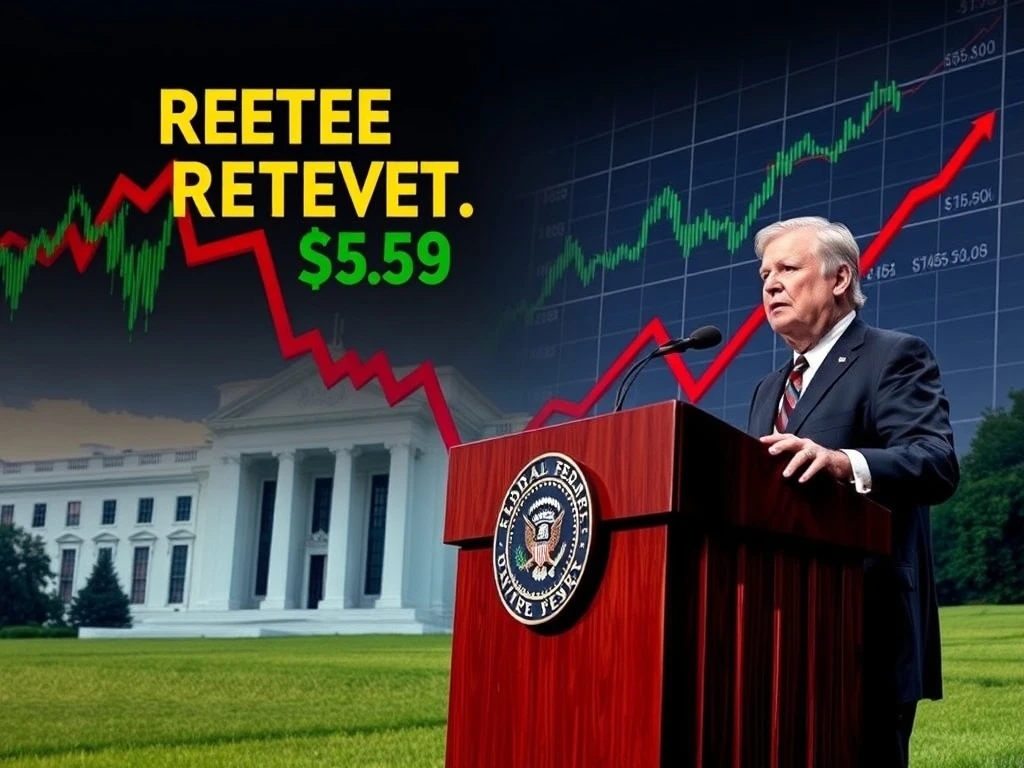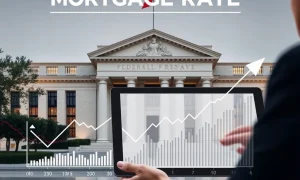The financial world recently noted a significant development. A prominent voice from within the Federal Reserve ranks has intensified her call for rapid Fed interest rate cuts. This marks a notable shift from the prevailing consensus. Such a divergence in opinion often signals important discussions brewing within the central bank. Therefore, market participants and economic observers are now closely monitoring these developments. They understand the potential impact on future monetary policy.
The Growing Push for Urgent Fed Interest Rate Cuts
A specific Federal Reserve official has notably amplified her advocacy for swift Fed interest rate cuts. This perspective contrasts with the cautious approach favored by many of her colleagues. She emphasizes the need for a more aggressive easing cycle. Her arguments stem from an analysis of current economic indicators. Furthermore, she believes that delaying action could lead to more severe economic consequences. Consequently, her public statements are drawing considerable attention.
Indeed, her position highlights a critical debate. How quickly should the Fed respond to economic shifts? Historically, the Federal Reserve has balanced inflation control with employment goals. However, this official suggests a stronger emphasis on supporting economic growth now. She argues that inflation pressures have eased sufficiently. Therefore, the focus should shift to preventing a deeper slowdown. This perspective could influence upcoming policy decisions significantly.
Understanding the Economic Rationale Behind Rate Cut Demands
The call for faster Fed interest rate cuts is not without its economic rationale. Proponents of this view often point to several key factors:
- Slowing Economic Growth: Recent data suggests a deceleration in economic activity. This includes manufacturing output and consumer spending.
- Easing Inflationary Pressures: Inflation rates have shown a downward trend. This moves closer to the Fed’s target of 2%.
- Labor Market Softening: While still robust, the labor market exhibits signs of cooling. This includes a slight rise in unemployment claims.
- Global Economic Headwinds: International economic slowdowns could impact domestic growth.
Therefore, advocates for cuts believe proactive measures are necessary. They aim to prevent a recession. Moreover, lower rates reduce borrowing costs for businesses and consumers. This can stimulate investment and spending. Ultimately, such actions could provide a much-needed boost to economic activity.
Potential Ramifications of Aggressive Fed Interest Rate Cuts
Implementing aggressive Fed interest rate cuts carries both potential benefits and risks. Understanding these outcomes is crucial for all stakeholders. The central bank must weigh these factors carefully. Their decisions affect everyone from large corporations to individual households.
On the positive side, rapid rate cuts can:
- Stimulate Economic Activity: Lower borrowing costs encourage businesses to invest and expand. Consumers may also increase spending.
- Boost Asset Markets: Stock markets often react positively to rate cuts. Lower interest rates make equities more attractive.
- Ease Debt Burdens: Companies and individuals with variable-rate loans see reduced interest payments.
However, there are significant risks associated with overly aggressive easing. These include:
- Reigniting Inflation: If cuts are too deep or too fast, inflation could surge again. This would erode purchasing power.
- Asset Bubbles: Excess liquidity can inflate asset prices unsustainably. This creates risks for financial stability.
- Currency Depreciation: Lower rates can weaken the domestic currency. This makes imports more expensive.
Thus, the Fed faces a delicate balancing act. They must support growth without compromising price stability. This constant evaluation informs their policy path.
Historical Precedent and the Future of Fed Interest Rate Cuts
Examining past periods of Fed interest rate cuts provides valuable context. The Federal Reserve has cut rates during various economic cycles. For instance, they reduced rates significantly during the 2008 financial crisis. They also lowered them in response to the COVID-19 pandemic in 2020. Each period presented unique challenges. Consequently, the outcomes varied. These historical events inform current policy discussions.
The current economic environment differs from past downturns. Inflation remains a key concern, despite recent declines. Furthermore, the labor market shows resilience. Therefore, the Fed must tailor its response to present conditions. The dissenting voice suggests that the current situation warrants a more decisive move. She believes the risks of inaction outweigh the risks of aggressive cuts. This highlights the ongoing internal debate.
Ultimately, the path forward for Fed interest rate cuts remains uncertain. The Federal Reserve’s decisions are data-dependent. Upcoming economic reports will heavily influence their stance. These include inflation figures, employment data, and GDP growth. Moreover, the consensus among Fed officials can shift. Public statements from various members provide clues. Investors and businesses watch these signals closely. They aim to anticipate future policy moves.
The Impact on Financial Markets and Beyond
The prospect of significant Fed interest rate cuts sends ripples across financial markets. Bond yields typically fall. This reflects lower borrowing costs. Equity markets often react positively. Investors anticipate improved corporate earnings. Furthermore, the housing market can experience a boost. Lower mortgage rates make homeownership more accessible. However, these impacts are not always straightforward.
Currency markets also react to interest rate expectations. A country’s currency may weaken if its interest rates fall relative to others. This affects trade balances and international investment flows. Businesses with global operations pay close attention. Their profitability can be influenced by currency fluctuations. Therefore, the Fed’s decisions have far-reaching consequences. They extend beyond domestic borders.
Navigating the Evolving Landscape of Fed Policy
The Federal Reserve’s monetary policy decisions are complex. They involve balancing competing objectives. The push for faster Fed interest rate cuts represents a significant viewpoint. It challenges the more conservative approach. This internal debate reflects the uncertainties in the current economic climate. Policymakers must weigh various risks and opportunities. Their choices will shape the economic trajectory for months and years to come.
Market participants should remain vigilant. They must monitor economic data releases. They also need to pay attention to statements from Fed officials. Understanding these nuances is vital. It helps in making informed financial decisions. The ongoing discussion about rate cuts highlights the dynamic nature of monetary policy. It emphasizes the need for adaptability in financial strategies.
In conclusion, the intensified call for rapid Fed interest rate cuts marks a critical juncture. It signals a potential shift in the Federal Reserve’s strategy. While the path remains uncertain, the debate itself provides valuable insight. It reveals the complex considerations guiding the nation’s economic stewards. Ultimately, the Fed will make its decisions based on evolving economic conditions and internal consensus.
Frequently Asked Questions (FAQs)
Q1: What are Fed interest rate cuts?
Fed interest rate cuts refer to the Federal Reserve lowering its benchmark interest rate, the federal funds rate. This rate influences other interest rates throughout the economy. Lowering it aims to make borrowing cheaper, encouraging spending and investment to stimulate economic growth.
Q2: Why is a voice from the Fed advocating for fast cuts?
A prominent voice from the Fed is advocating for fast cuts due to concerns about slowing economic growth, easing inflation, and a potentially softening labor market. They believe proactive measures are necessary to prevent a deeper economic downturn and support recovery.
Q3: How do interest rate cuts impact the economy?
Interest rate cuts can stimulate the economy by reducing borrowing costs for consumers and businesses, leading to increased spending, investment, and job creation. They can also boost stock markets and make housing more affordable. However, risks include potentially reigniting inflation or creating asset bubbles.
Q4: What is the Federal Reserve’s dual mandate?
The Federal Reserve operates under a dual mandate from Congress. Its objectives are to achieve maximum employment and maintain price stability (low and stable inflation). Decisions regarding Fed interest rate cuts are made to balance these two goals.
Q5: When might the Fed implement these interest rate cuts?
The timing of any Fed interest rate cuts depends on various factors. These include incoming economic data, global economic conditions, and the consensus among Federal Reserve officials. The Fed typically reviews these factors at its scheduled meetings throughout the year.








